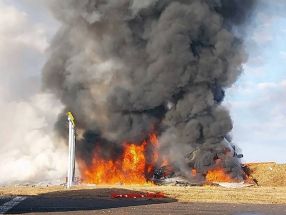Afghan military faces surge in roadside bombs
GARDEZ, Afghanistan — Raqam Jan was at home on furlough after two years of fighting for the Afghan army when he stepped out of his house and onto a homemade mine. It had been planted not just to kill him but to send a message to his fellow villagers about the perils of serving in the Afghan security forces.
Recovering from shrapnel wounds to his legs in a military hospital in Gardez, near the border with Pakistan, the 24-year-old private vented his frustration with the Taliban's increasing use of what the U.S. military calls IEDs, or improvised explosive devices.
"Fighting them face-to-face is not a problem for us; our weakness is mines, we have some weakness countering mines," Jan said.
After 12 years of war, roadside bombs are the No. 1 killer, claiming thousands of lives every year. And as foreign troops wind down operations in preparation for their withdrawal in 15 months, insurgents are using an ever larger number of these explosives to assert their grip and recapture territory.
Afghan and coalition military officials say their enemy is resorting to hidden bombs because it can't take on the Afghan security forces in open battle. Now they are equipping Afghan forces with metal detectors and specialized vehicles to clear roads, and running a school for bomb squads.
Gen. Mohammad Sharif Yaftali, commander of Afghanistan's 203rd Thunder Corps, said these soldiers and police are neutralizing 90 percent of the IEDs they find.
But while visits to bases around the country have shown the Afghan forces are capable of fighting insurgents in open battle, the Taliban are resorting to fewer but bigger bombs, as well as more suicide attacks.
They are becoming more deadly, using bombs with sophisticated remote control detonators. Their surveillance has improved, according to Afghan and coalition military officials.
On Sept. 7, insurgents used a bomb to blow up a helicopter as it was landing on hill near a main air base in western Herat province, seriously wounding the Afghan pilot and his U.S. army trainer. They apparently had noticed that the helicopter always landed in the same place after a training mission.
"The enemy's only real weapon is the IED," Yaftali said in Gardez recently. "IEDs are the only way they can show their presence. It is the weapon of choice."
The casualty toll among the 350,000 strong Afghan army and police has risen sharply in the months since they took over security responsibility from the U.S.-led coalition — up to 100 are killed each week.
In mid-August, Lt. Gen. Mark Milley, who runs the coalition's joint command, told reporters that 1,000 Afghan security personnel had been killed and 3,000 wounded in four months.
Afghan military officials say about 50 percent of the casualties are caused by roadside bombs. At that rate the casualty toll could be double what it was last year.
By comparison, with few if any foreign soldiers on patrol since the handover of security responsibilities, their death toll this year is 126, compared to 302 in the same period of 2012, according to an Associated Press tally.
The U.N. said in the first six months of this year, 1,319 civilians were killed and 2,533 were wounded, the majority of them by roadside bombs.
- Latest
- Trending































